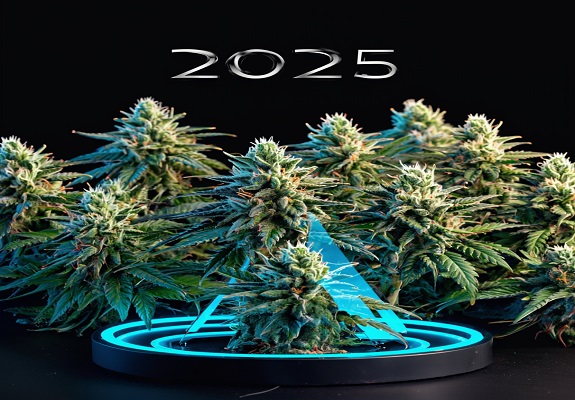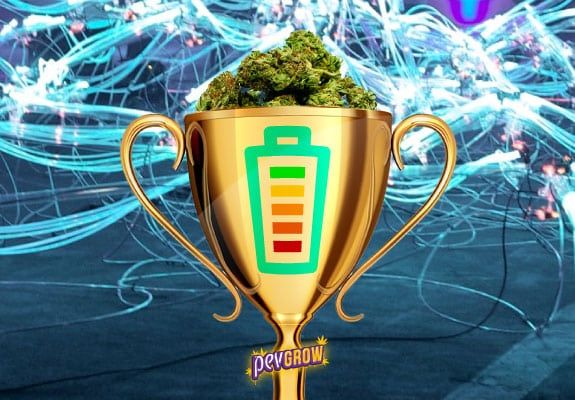- This article explores the uses and applications of the Blue Dream strain, highlighting its genetic balance between Sativa and Indica and its cannabinoid and terpene profile. This balance offers therapeutic benefits, especially for relieving anxiety and improving sleep, thanks to the entourage effect of its components.
- – Strains similar to Blue Dream
- – Meet the cannabis strain Blueberry


In constant struggle for the regulation of cannabis, mainly in the medicinal field.
19-02-2024 08:00:00 - Updated: 19 February, 2024
Welcome to the fascinating world of Blue Dream, one of the most popular and versatile cannabis strains. This article will delve into the benefits of Blue Dream, exploring its cannabinoid and terpene profile, and how these components work together to create an entourage effect that offers multiple therapeutic benefits. If you want to check out other medical cannabis strains, take a look at this article that discusses the best CBD-rich strains for treating different conditions.
What is the Blue Dream strain good for?
The Blue Dream strain, known for its popularity in the cannabis world, features a cannabinoid and terpene profile that contributes to its various therapeutic applications through the entourage effect. According to information available on the web, Blue Dream’s cannabinoid profile generally includes a THC content ranging from 17% to 24%, with low levels of CBD, around 0.1% to 0.2%. This combination gives Blue Dream considerable psychoactive potency while maintaining a low impact of CBD.
Given its THC dominance and low CBD content, Blue Dream is effective for pain management, depression, and anxiety, offering a balanced experience between cerebral stimulation and body relaxation. THC in high concentrations, as found in Blue Dream, is known for its pain-relieving properties, mood enhancement, and appetite stimulation.
Uses and applications of the Blue Dream strain based on its terpenes
In addition, the terpene profile of Blue Dream, dominated by myrcene, alpha-pinene, linalool, limonene, and caryophyllene, contributes to its therapeutic effects. Myrcene has sedative and analgesic effects, while alpha-pinene and limonene offer anti-inflammatory and anxiolytic properties. Linalool, with its lavender scent, also provides relaxing effects and may help with anxiety. Caryophyllene, with its spicy scent, is known for its anti-inflammatory and analgesic effects.
- Myrcene: This terpene has a fruity and clove-like aroma and is one of the most common terpenes in cannabis. It has sedative effects, contributing to the relaxing sensation of Blue Dream. Additionally, myrcene has analgesic, anti-inflammatory, and antimutagenic properties.
- Alpha-Pinene: With a distinctive pine aroma, this terpene is also found in conifer trees, rosemary, eucalyptus, and orange peels. Alpha-pinene is known for its potential anti-inflammatory, antimicrobial, anti-ulcerative, and gastroprotective properties.
- Linalool: This terpene, with its characteristic lavender scent, is known for its relaxing and anxiolytic effects. Linalool may help reduce anxiety and stress and has also been researched for its potential in Alzheimer’s treatments.
- Limonene: With a fresh citrus scent, limonene is known for its mood-enhancing and stress-relieving properties. This terpene also has anti-inflammatory and antimicrobial effects and may improve the absorption of other terpenes and chemicals through the skin and mucous membranes.
- Caryophyllene: This terpene has a spicy scent and is found in spices such as cloves and black pepper. Caryophyllene is known for its anti-inflammatory and analgesic properties and is the only terpene that binds to the CB2 receptors of the endocannabinoid system, which may be beneficial in treating pain and inflammation.
These characteristics make Blue Dream a versatile choice for those looking to alleviate various symptoms without an overly sleepy or sedative effect, making it suitable for daytime use. The combination of THC and terpenes in Blue Dream could be particularly effective in creating an experience that relieves pain, reduces anxiety, and enhances mood, while maintaining a certain level of mental clarity and energy.
It is important to remember that the effects of cannabis can vary from person to person and that it is always recommended to consume it responsibly and under the guidance of a health professional, especially in regions where its use is legal and regulated.
Is Blue Dream Sativa or Indica?
Blue Dream is a Sativa-dominant hybrid, approximately 60% to 70% Sativa, with 30% to 40% Indica genetics. This combination gives it a perfect balance between the cerebral energy of Sativas and the body relaxation of Indicas, making it ideal for daytime use and for those seeking relief without an excessive sedative effect.
Is Blue Dream good for anxiety?
Yes, Blue Dream is effective in relieving anxiety thanks to its terpene profile and the entourage effect. Terpenes like myrcene and linalool in Blue Dream have anxiolytic and relaxing properties, which help reduce stress and promote calmness. Myrcene, in particular, is known for its sedative effects, while linalool, with its lavender scent, contributes to relaxation and anxiety relief. The presence of THC in the strain also plays a role, as it can enhance mood and provide a sense of well-being, which can be helpful for people with anxiety. However, it is important to consider that the reaction to cannabis can vary from person to person and that high doses of THC can sometimes increase anxiety in some individuals. Therefore, it is recommended to start with low doses and adjust according to individual response.
Is Blue Dream suitable for sleep?
Blue Dream can be helpful for people who have difficulty sleeping, especially if their insomnia is related to anxiety or stress. Although the strain is energizing and promotes mental clarity, it also has relaxing properties that can assist in the transition to sleep. The balance of its sativa and indica effects allows Blue Dream to offer relaxation without excessive drowsiness. The content of myrcene and linalool helps induce relaxation and may facilitate sleep in people who experience stress or anxiety before bedtime. However, due to its stimulating effect, Blue Dream might not be the best choice for those looking for a strong sedative to sleep. In these cases, a strain with a cannabinoid and terpene profile more geared towards sedative effects might be more suitable. If you want to see the best genetics in this regard, don’t miss this article that talks about the best cannabis strains and products for sleep, and if you liked what you read here today, I would appreciate it if you share it on your social networks.
Conclusions
In conclusion, Blue Dream is an exceptional strain for both recreational and medicinal users. Its balance between Sativa and Indica, along with a rich profile of terpenes and cannabinoids, makes it a versatile and effective option for a variety of needs. Visit Pevgrow to learn more about this amazing strain and how it can improve your well-being.
FAQs:
Does Blue Dream have side effects?
As with any cannabis strain, Blue Dream can have side effects such as dry mouth and eyes, and in some cases, anxiety if consumed in excess. Responsible consumption is recommended.
What is the best way to consume Blue Dream?
Blue Dream can be consumed in various ways, including smoking, vaporizing, and edibles. The choice depends on personal preferences and individual reaction.
Can Blue Dream help in pain management?
Yes, the THC content in Blue Dream makes it effective in relieving different types of pain, including chronic pain and muscle aches.





